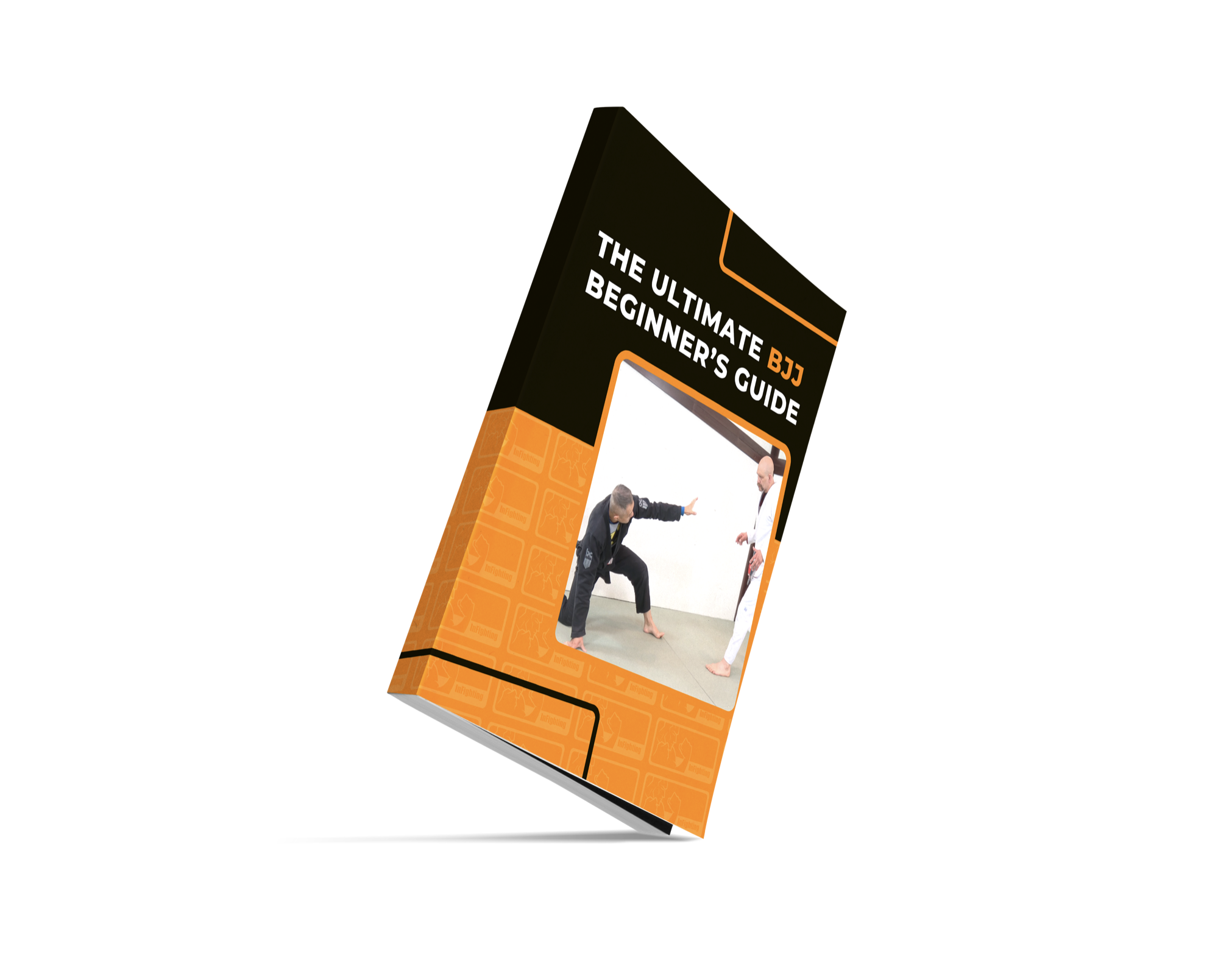
Table of Contents
- The BJJ Beginner’s Guide Part 1: The Technical Standup
- The BJJ Beginner’s Guide Part 2: Shrimping
- The BJJ Beginner’s Guide Part 3: How To Shoulder Roll
- The BJJ Beginner’s Guide Part 4: The Basic Positions
- The BJJ Beginner’s Guide Part 5: The BJJ Dialogue
- The BJJ Beginner’s Guide Part 6: BJJ In A Single Sentence
- Bonus: How To Tie Your BJJ Belt
This is the Ultimate BJJ Beginner’s Guide. With this guide, you’ll be able to jump into any Brazilian Jiu Jitsu class in the world and have a strong understanding of the principles and concepts associated with this amazing martial art.
Firstly, what is Brazilian Jiu Jitsu?
Brazilian Jiu Jitsu is a way for me to defend myself if I’m lying on my back.
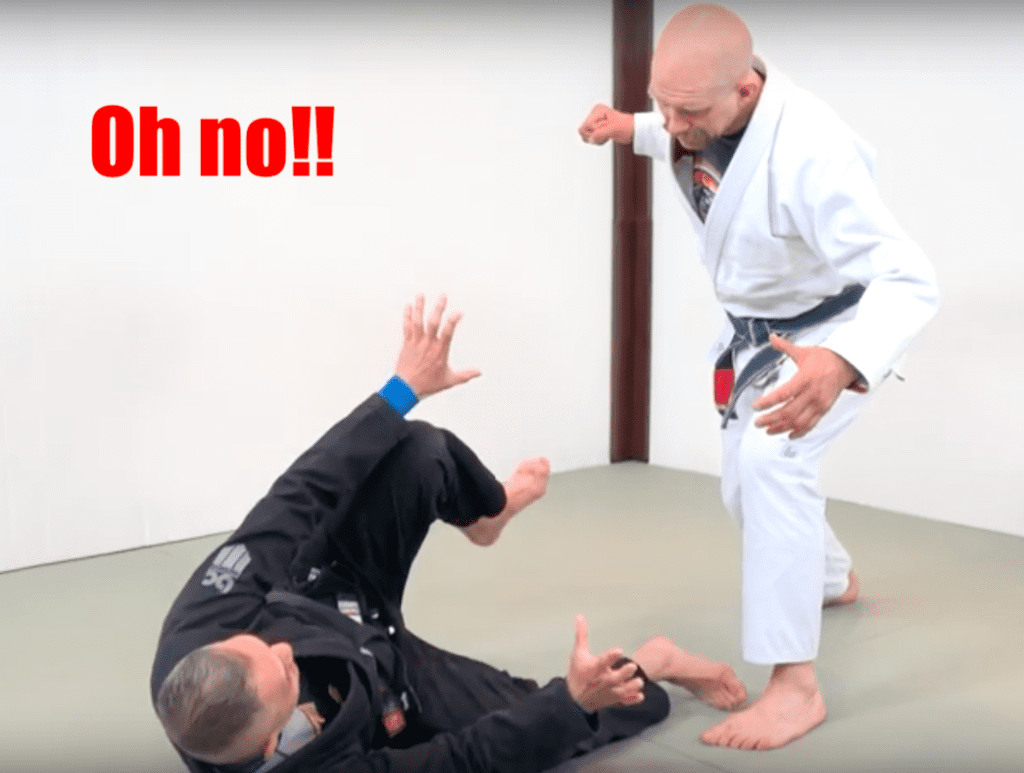 Typically, when you first start a martial art, the first thing someone will teach you is fight stance. However, this has an inherent problem; since, this assumes that you can get into a fight stance.
Typically, when you first start a martial art, the first thing someone will teach you is fight stance. However, this has an inherent problem; since, this assumes that you can get into a fight stance.
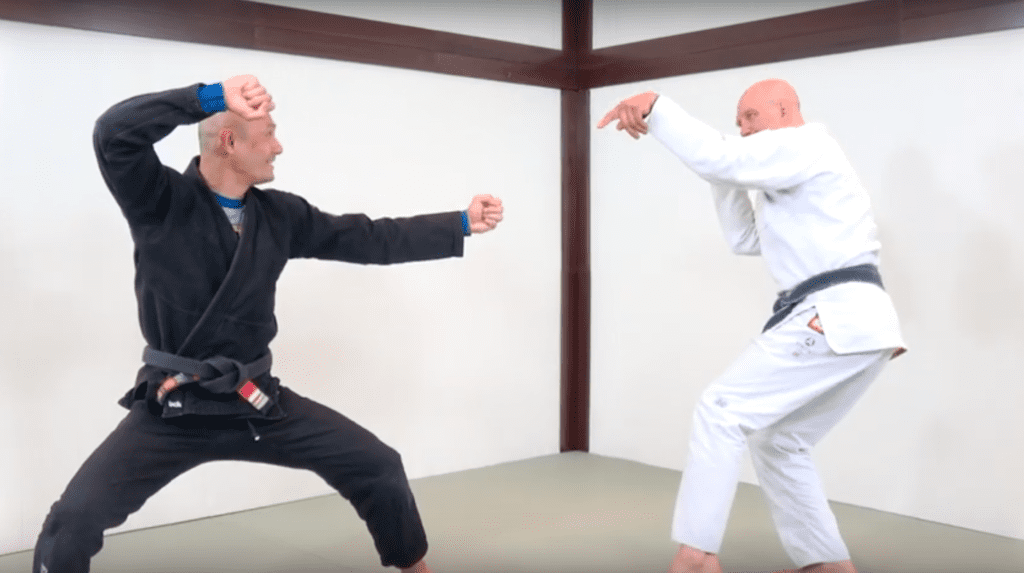
What if you’re lying on the ground on your back with a bigger, stronger attacker looming over you and you can’t stand up to get into your fight stance? How effective is your Praying Manis Kung Fu fight stance when you’re on your back?
So we need some type of “fight stance” even when we’re on our back. A key principle in fighting is to always have one hand in between my nose and my opponent’s nose. This is true whether I’m Boxing, Kickboxing or if I’m on my back.
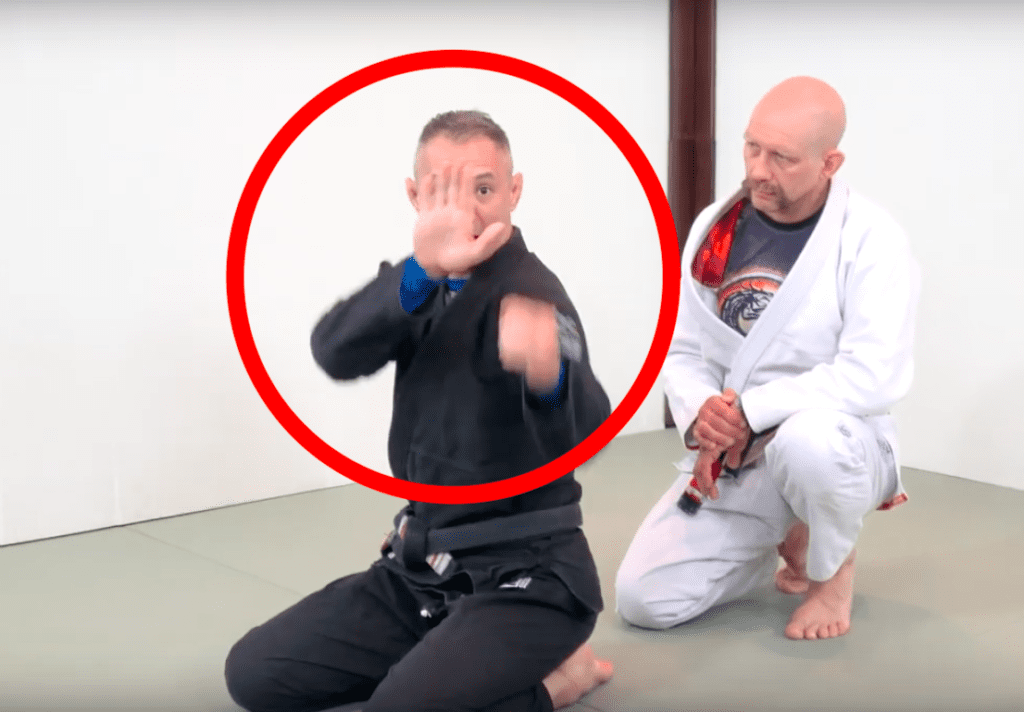
And, this is also true in Brazilian Jiu Jitsu. I need something in between my nose and my partner’s nose. I can have my left hand, my right hand, my left foot or my right foot; but, something needs to be in between my nose and my partner’s nose.
Another core principle in fighting is distance management; meaning, if my opponent steps forward, I need to step back and if my opponent steps back, I need to step forward. Distance management in Boxing is called footwork; however, we still need footwork when we are on our back.
The first stage of learning footwork when we are on our back is something I call Butt Scooting. Butt Scooting looks like I’m sitting at the beach. My right hand is propping up my torso while my left hand is in between my nose and my partner’s nose.
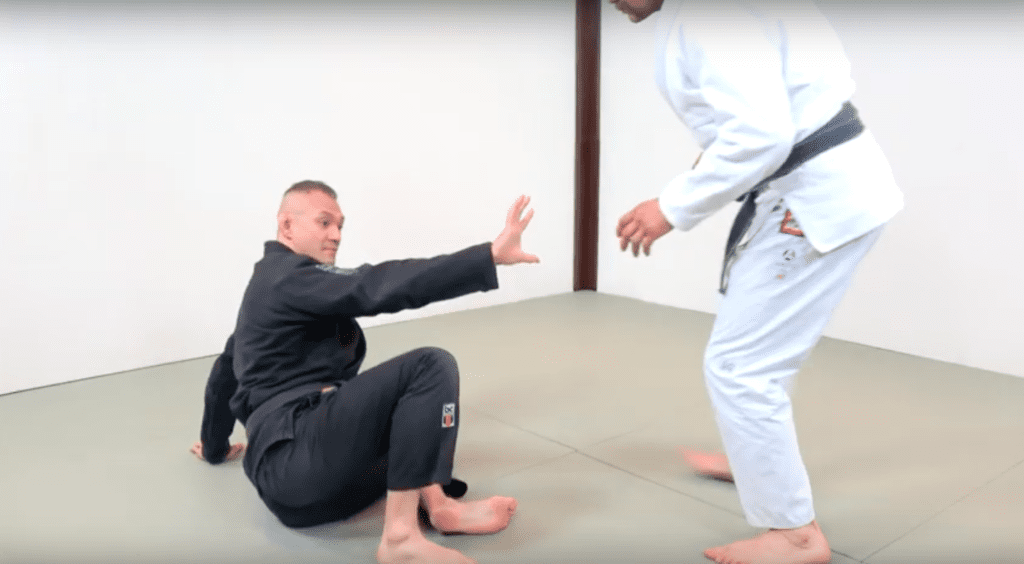
I can Butt Scoot forward and back by thinking that my right hand is my right foot and my hip is my left foot.
From this Butt Scooting position I can start to stand up in a safe, intelligent manner. In BJJ, we call this the Technical Standup; meaning, it’s a specific, technical way to get up on your feet when you’re on your back.
The BJJ Beginner’s Guide Part 1: The Technical Standup
Getting up to your feet is the primary purpose of Brazilian Jiu Jitsu. BJJ provides an effective and efficient method of getting up to your feet when you’re on your back and this method is called the Technical Standup.
The Technical Standup is method for you to get back up on your feet when there’s someone on top of you and resisting your ability to stand up.
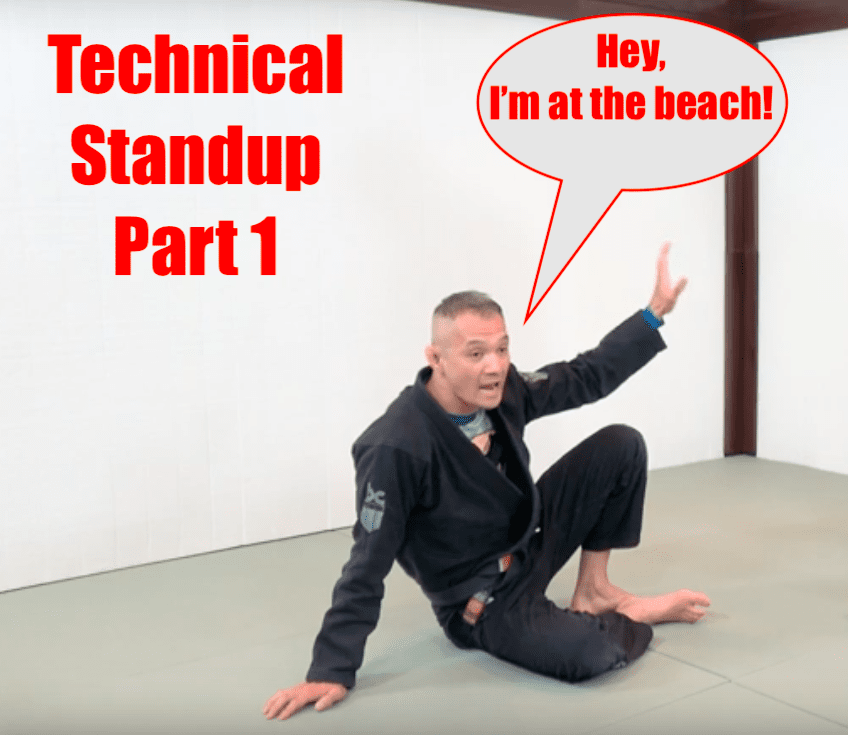
The technical standup starts with me sitting at the beach.
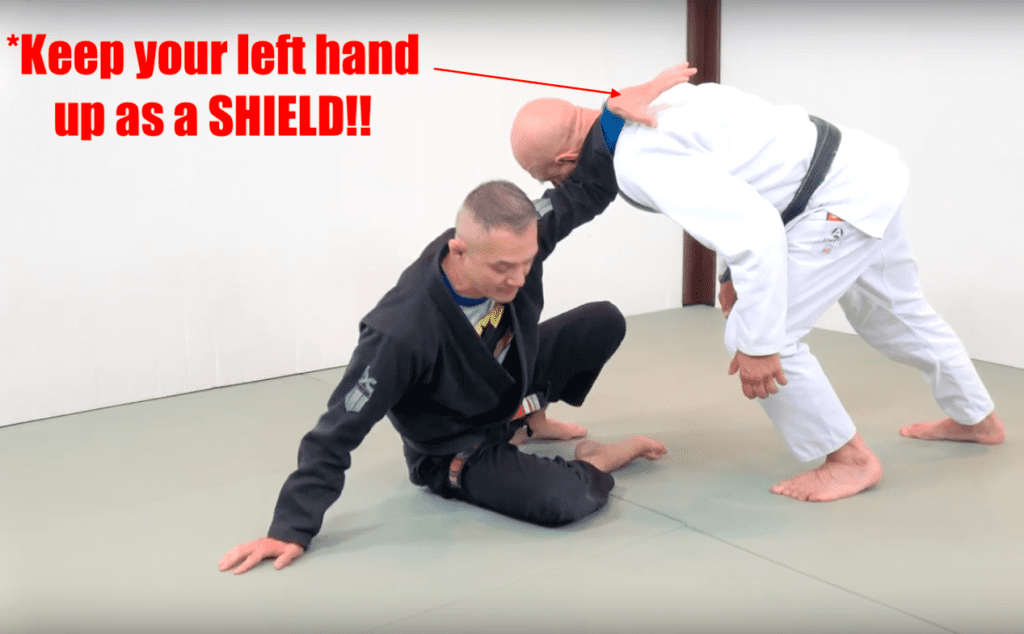
I have my left hand up and my right hand is on the ground propping up my upper body. The critical thing to remember is to keep your left hand up. Your left hand is basically a shield to protect you from someone trying to smash you!

I lift up my hip and I extract my right knee so that it’s as far away from my left foot as possible; plus, my feet are as far apart as possible.
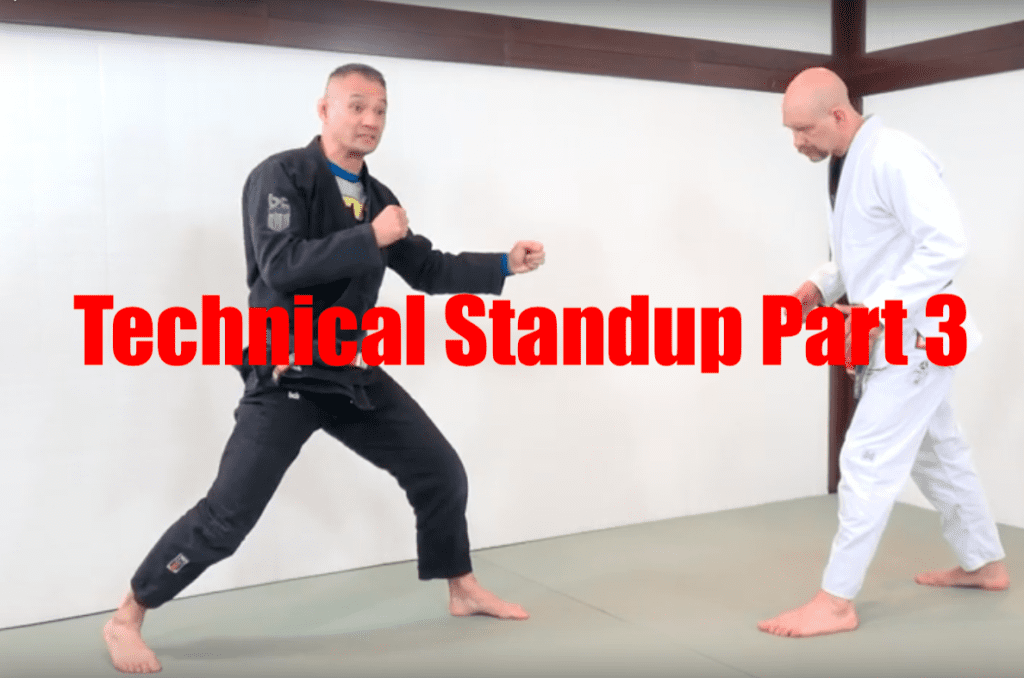
From this position; I can drive up using my legs so I can get up to my standing fighting stance.
Watch 👀 the video 📺 below on the Technical Standup😃
The BJJ Beginner’s Guide Part 2: Shrimping
Shrimping is basically footwork when you’re on your back.
The best way to understand Shrimping is to look back at Part 1 of our Ultimate BJJ Beginner’s Guide and start with Butt Scooting. Butt Scooting is where we use our right hand as our right foot and our hip as our left foot. Butt Scooting is the best way to start learning how to Shrimp.
The next progression is to move down to our elbow. We now use our right elbow like our right foot and our hip as our left foot. Butt Scooting on our elbows is slightly more difficult than moving on our hands but it’s still a great way to maintain mobility once we’re on our backs.
The final progression is to drop down to our right shoulder. We move our right shoulder like it’s our right foot and our hip is our left foot. We are now shrimping!
Practice going forward and back on your right shoulder. And then practice on your left shoulder.
Shrimping is the most important skill in Brazilian Jiu Jitsu. Shrimping and hip mobility is involved in virtually every Brazilian Jiu Jitsu bottom technique. Every sweep, submission or back take has some degree of shrimping involved in it.
Check out👀 the video 📺 on Shrimping 😃
The BJJ Beginner’s Guide Part 3: How To Shoulder Roll
A fundamental movement for BJJ beginners to master is the shoulder roll. Firstly, Brazilian Jiu Jitsu is often called “Rolling”; meaning, sometimes you’ll go to your training partners and say, hey man, whatcha doing later, wanna roll?
Thus, being able to turn your body into a ball and roll forwards and backwards like a human yo-yo is a skill that embodies Jiu Jitsu.
Secondly, the shoulder roll demonstrates a key principle in BJJ – keeping your elbows and knees together. Â Winning a dominate position on your partner like top mount, top cross side or back means to successfully separate their elbows from their knees.
Furthermore, maintain a ball like shape with your body by keeping your elbows and knees together is how you maintain every offensive position when you’re on your back. Keeping a strong elbow/knee connection and maintaining a ball like shape with your body is how you maintain every Guard position.
Closed Guard
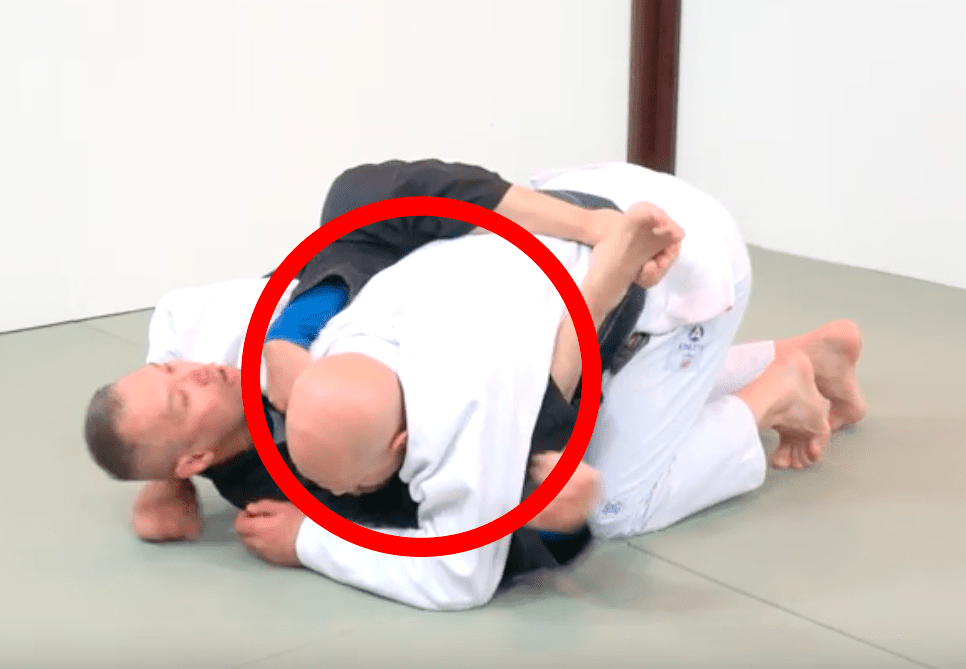
Spider Guard
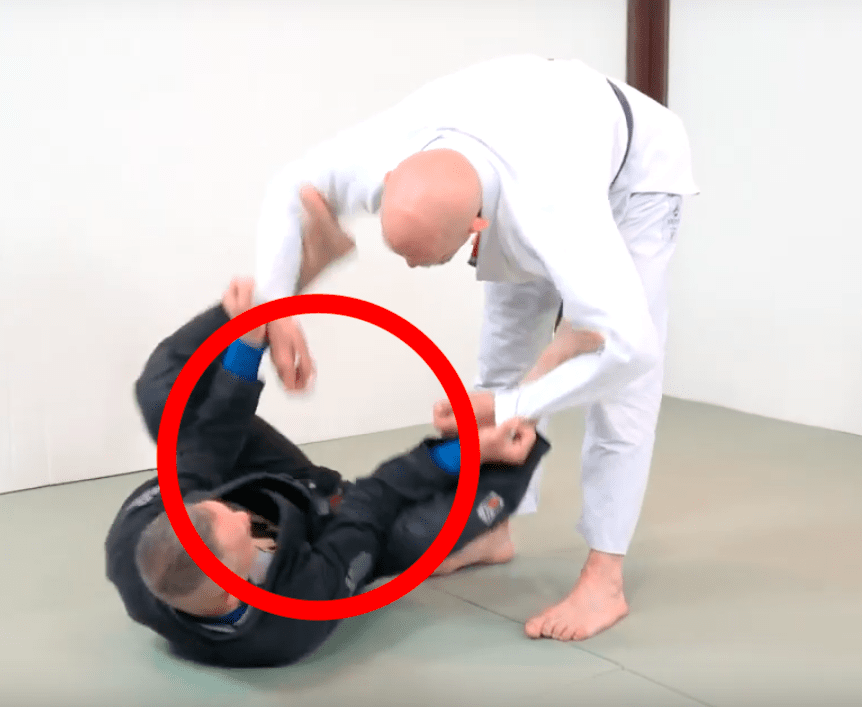
Half Guard
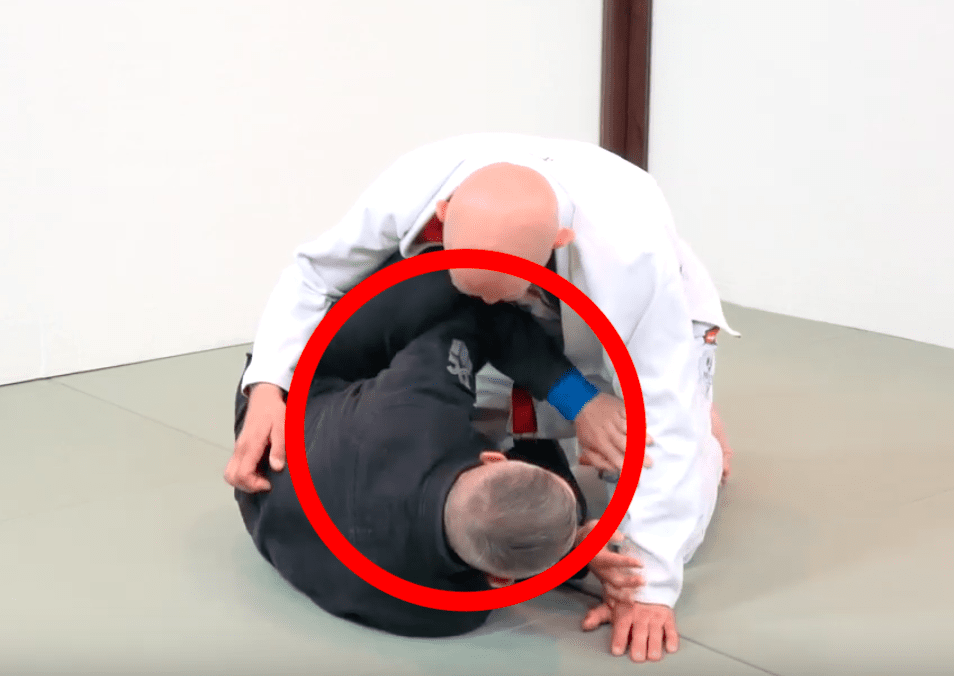
Butterfly Guard
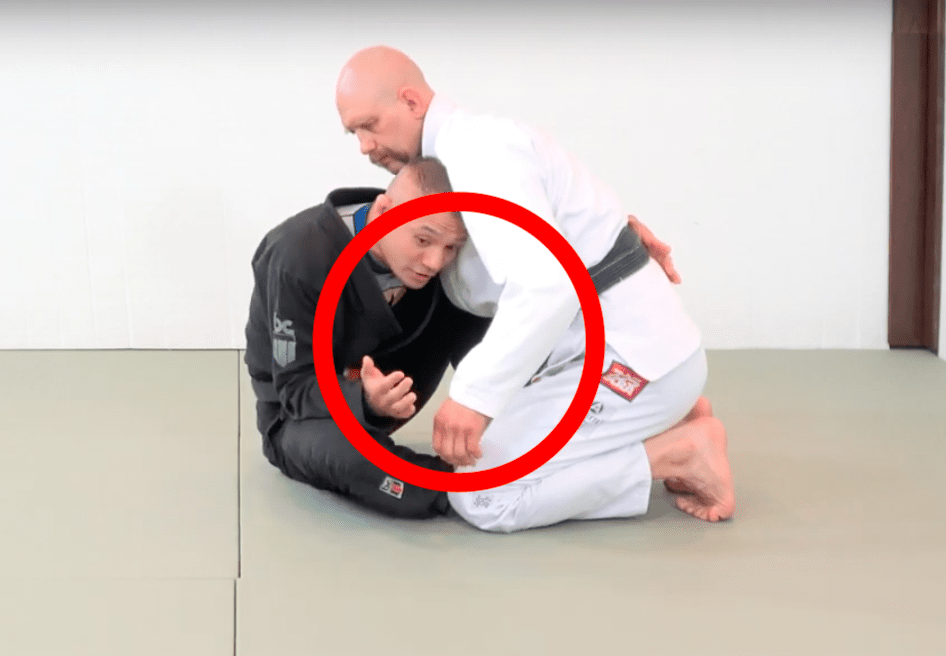
Shoulder rolling is only possible if you keep your elbows and knees together as you turn your body into a tight ball.
Lastly, shoulder rolling will help you keep your neck safe you practice Jiu Jitsu. When you’re shoulder rolling, you never touch your head to the mat; and thus, you’re able to keep your neck safe the entire time.
Try performing the shoulder roll on your living room floor. Go forwards and backwards a few times and you’ll be good to go for your first BJJ class!
Watch 👀 this video 📺 on how to shoulder roll!😃
The BJJ Beginner’s Guide Part 4: The Basic Positions
Brazilian Jiu Jitsu is defined and categorized by the different positions that are maintained when you’re grappling. These positions are:
Guard:
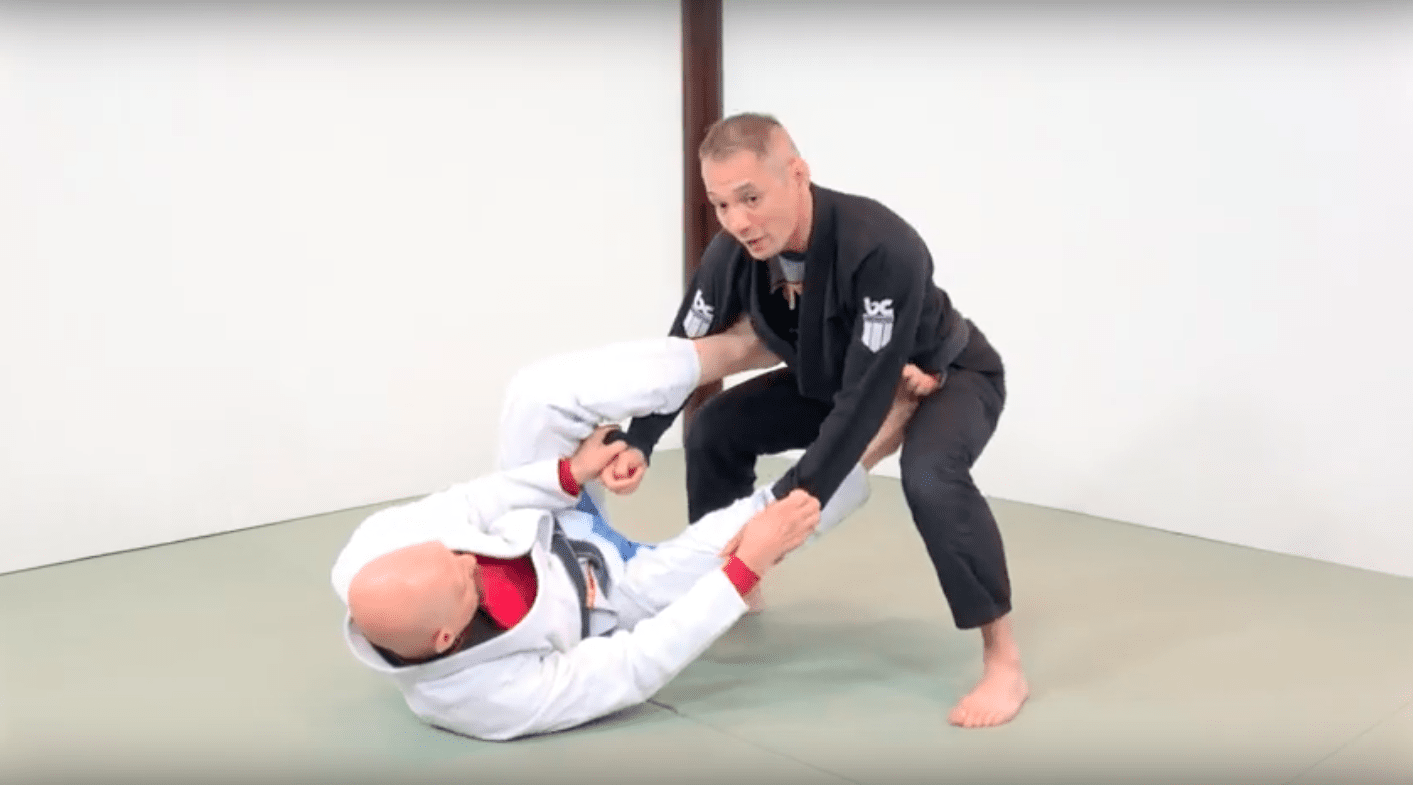
Guard means that you are on your back and you are giving your partner your legs. Your legs are the longest, strongest part of your body and you want to use your legs to keep your opponent at bay, control them and potentially submit them or sweep them.
4 Point:
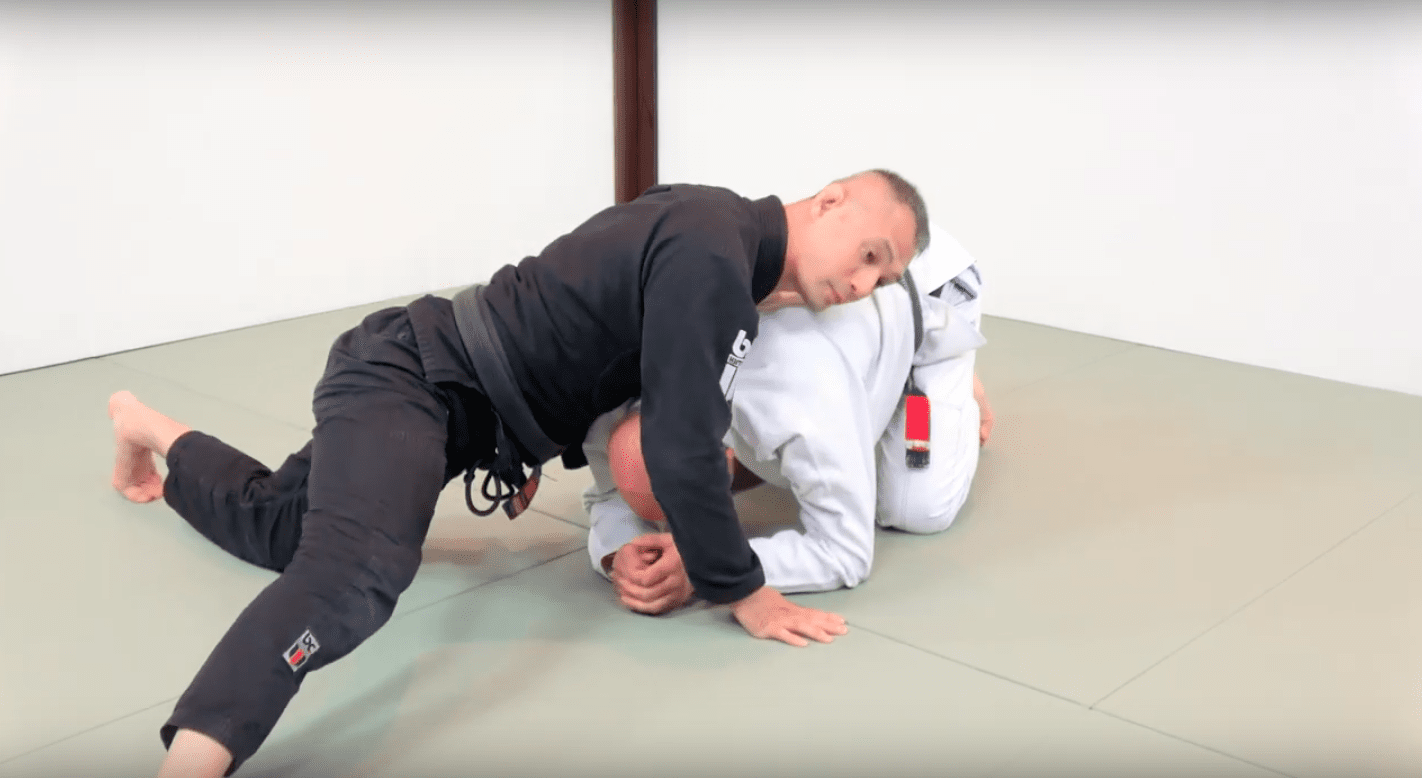
When you’re on your elbows and knees and you’re making yourself into a turtle. This, sometimes this position is called Turtle position.
Cross Side:
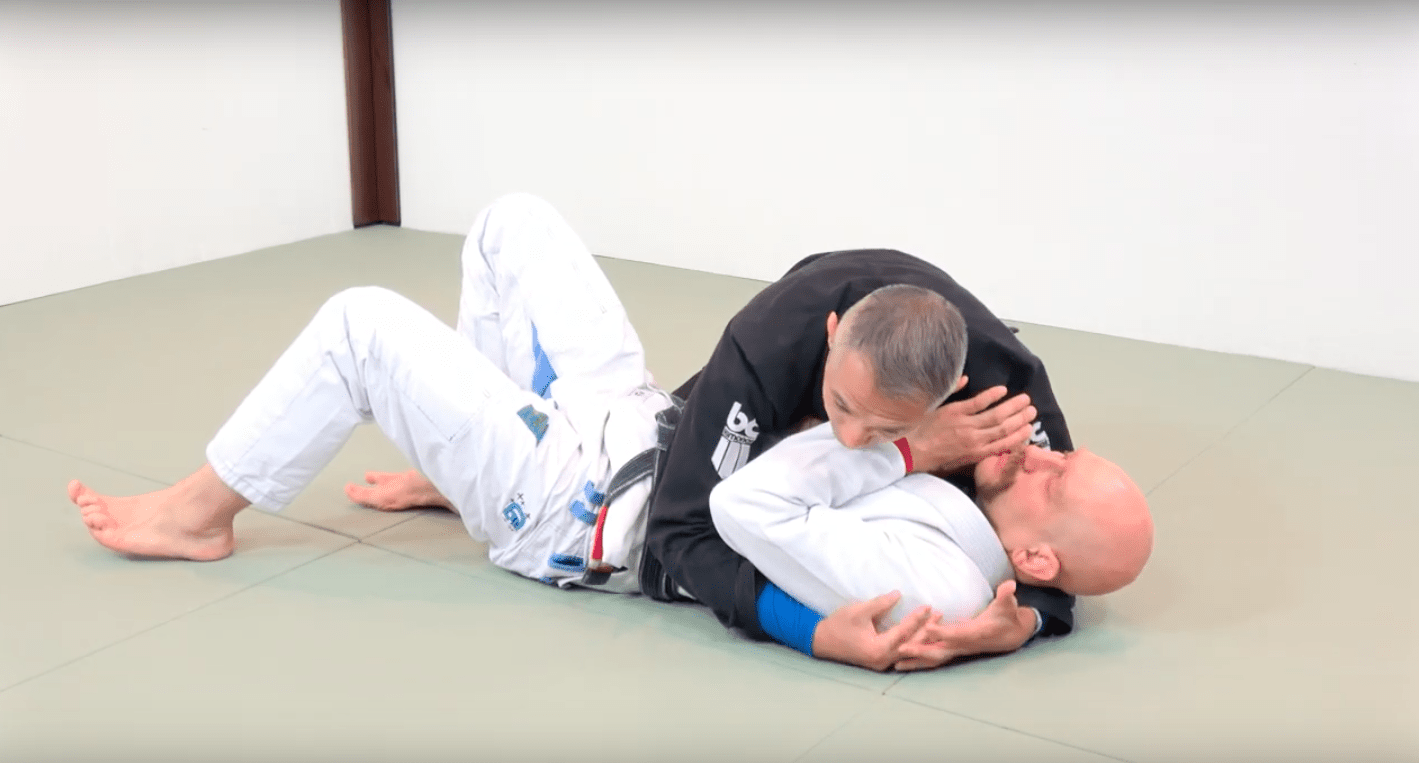
If you’re on top of your partner and you’re free from the control of their legs (Guard) you are most likely in Cross Side. Cross Side is made obvious by how your spine is perpendicular to your partner’s spine.
Knee On Belly:
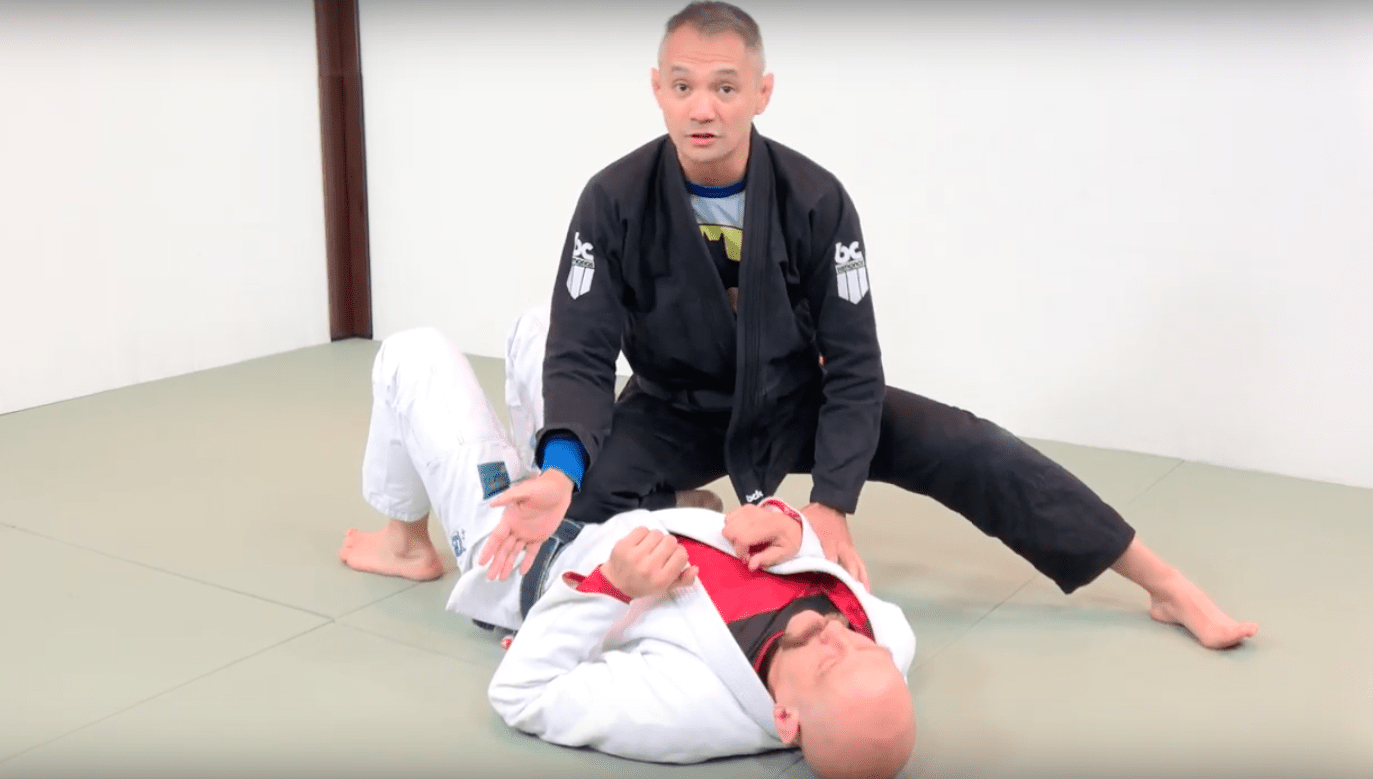
Also called Knee Mount this position is defined by your shin being across your partner’s belt line. Knee On Belly is a dominant top position that allows superior control of a strong and mobile opponent while maintaining an option either to move back to Cross Side or to move to Mount.
Mount:
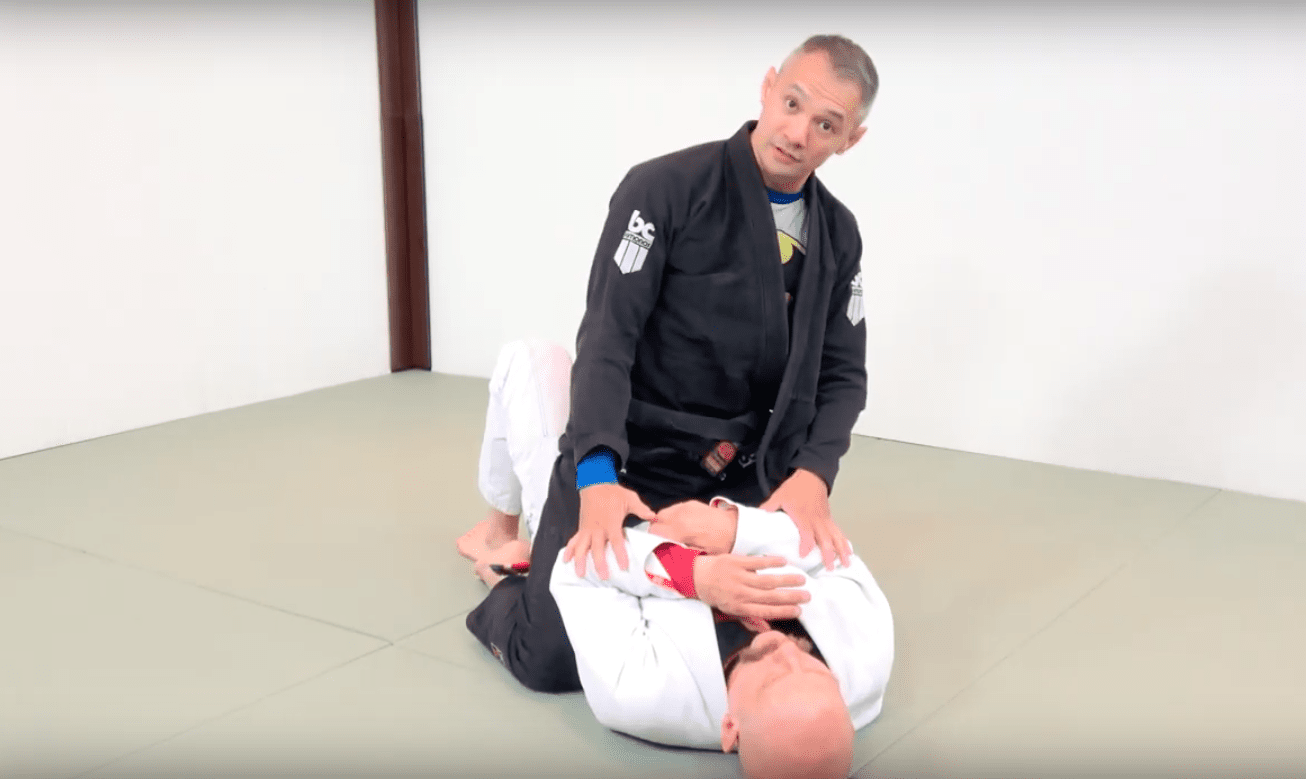
Mount is one of the most dominant top positions in Jiu Jitsu. From Mount, you’ll have your knees on both sides of your partner’s hips while keeping your hands free to attack your partner’s neck or arms.
Back:
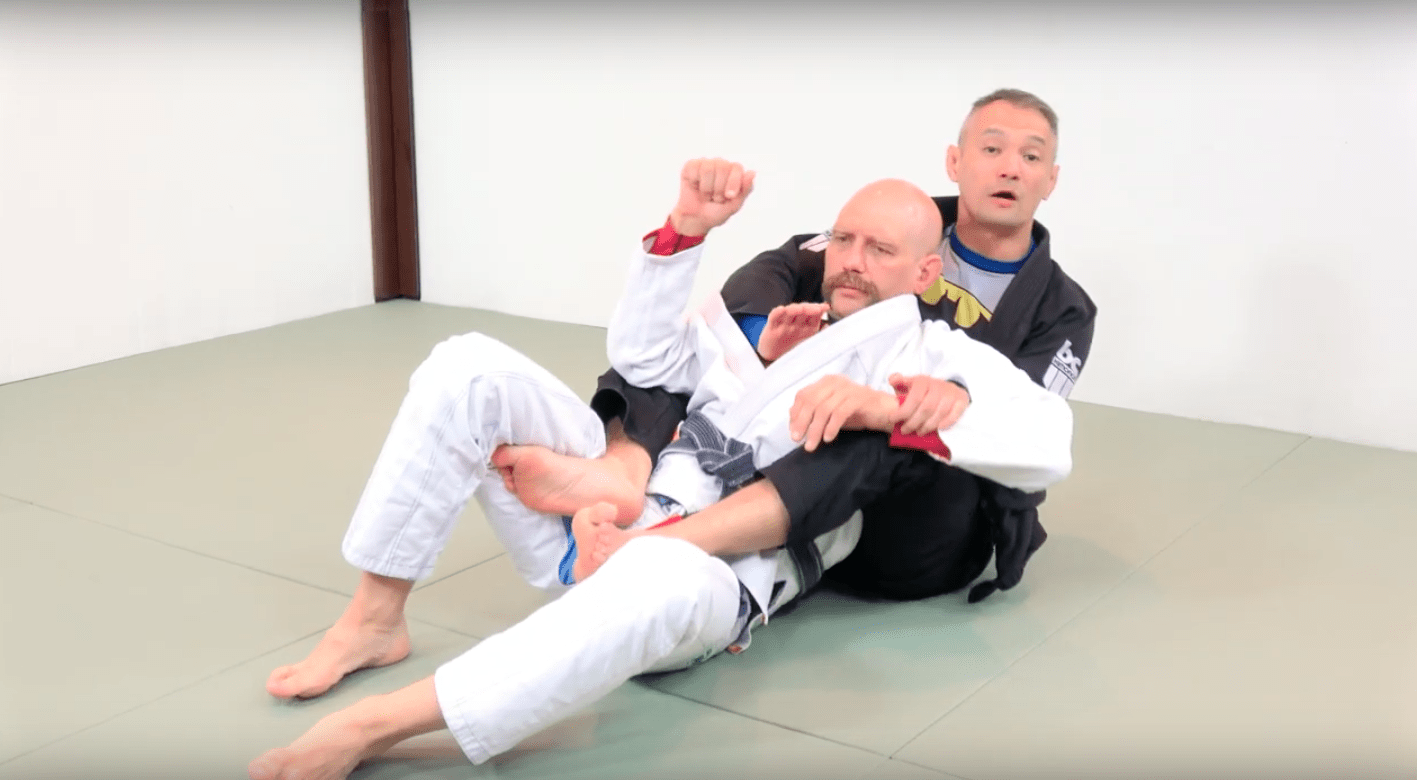
The Back position is probably the most offensive position in Jiu Jitsu. The Back position is defined by having your chest on your partner’s shoulder blades while keeping your feet hooked in front of their hips. By maintaining the Back, you have many high percentage options to attack your partner’s neck and arms; whereas, your partner has very few options to attack you.
Watch 👀 the video 📺 below on the basic BJJ positions 😃
The BJJ Beginner’s Guide Part 5: The BJJ Dialogue
Here’s a simple formula to decide what to do and when to do it. It’s called the BJJ Dialogue.
It all starts off with understanding whether you’re in a good position or if you’re in a bad position.
If you’re in a good position – keep it, then attack.
If you’re in a bad position – stay safe, then escape.
But all this begins with understanding what’s a good position and what’s a bad position in Brazilian Jiu Jitsu.
The BJJ Dialogue is basically a conversation that starts with the question: What position am I in?
The next questions is: Is the position good or bad?
If you’re in a good position:
- Maintain the position
- And then, Attack
If you’re in a bad position:
- Defend and stay safe
- And then, Escape
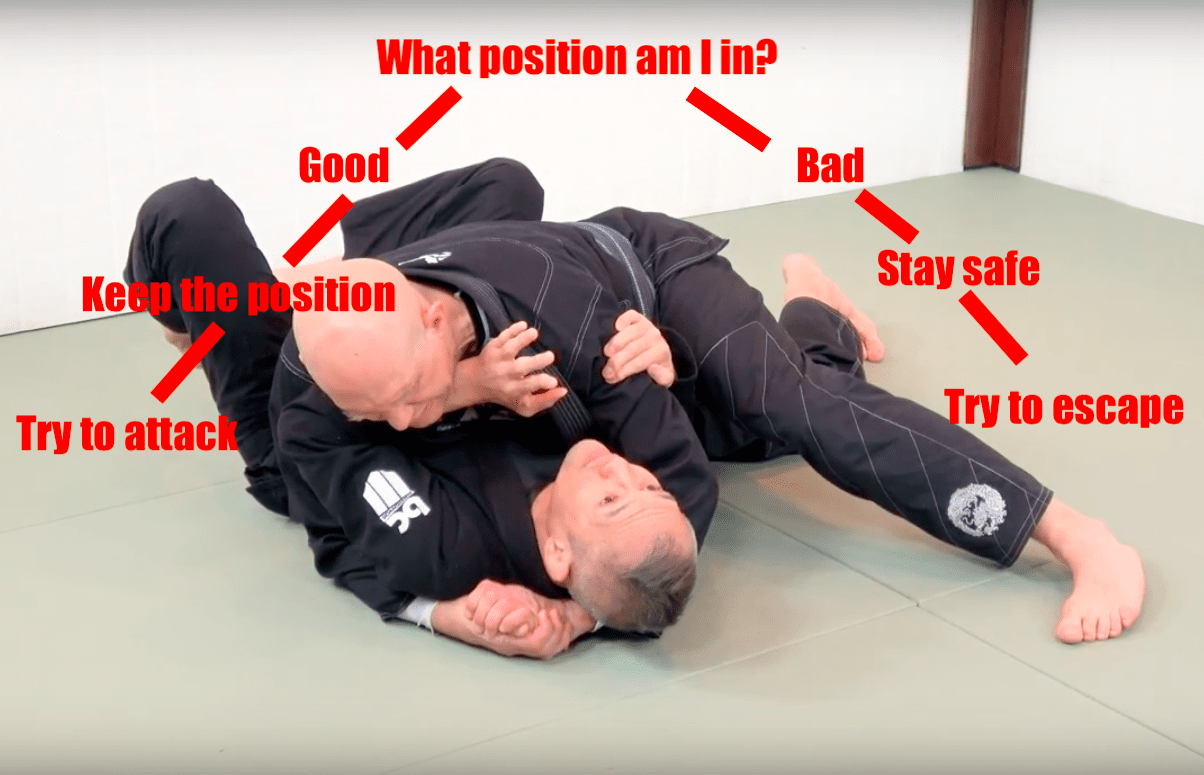
Newbies typically apply the sequence of techniques wrong.
For example, when novices find themselves in Bottom Mount, they’ll immediately try to escape. By attempting to escape Bottom Mount right away without first protecting their neck or their arms they open themselves up for Armbars and Chokes.
The proper sequencing is critical: If you’re in a bad position, defend first and then attempt to escape.
Let’s take another example to help us understand the BJJ Dialogue.
Here’s a common mistake made by newbies: I’m in Bottom Cross Side and it’s a bad position; thus, I’m going to attack with a choke and maintain this position.
If you’ve been doing Jiu Jitsu for a while, you’ll see that attacking from Bottom Cross Side is clearly wrong; but, we’ve all made these kinds of mistakes before.
We’ve all attacked from bad positions. It’s a mistake that everyone makes when they start Jiu Jitsu.
Understand that the BJJ Dialogue is a guideline primarily designed for White Belts.
The BJJ Dialogue is a simple method to help new students with a logical step by step process when they’re rolling.
The conversation that should be going through your head as you do Jiu Jitsu ought to sound like this:
What Position am I in?
Is the Position good or bad?
If it’s Good- maintain the position; and then, attack.
If it’s Bad- defend; and then escape.
When you’re just starting off Jiu Jitsu, deciding what to do and when to do is tough. Consider the BJJ Dialogue as a roadmap to practicing Jiu Jitsu correctly. After some time, the BJJ Dialogue will become intuitive and your responses will become habitual and your decision making will quicken and the BJJ Dialogue will become subconscious.
Watch 👀 this video 📺 on the BJJ Dialogue! 😃
The BJJ Beginner’s Guide Part 6: BJJ In A Single Sentence
To help you understand Brazilian Jiu Jitsu in simplest manner possible, here’s BJJ in a single sentence: FIGHT WITH YOUR FEET
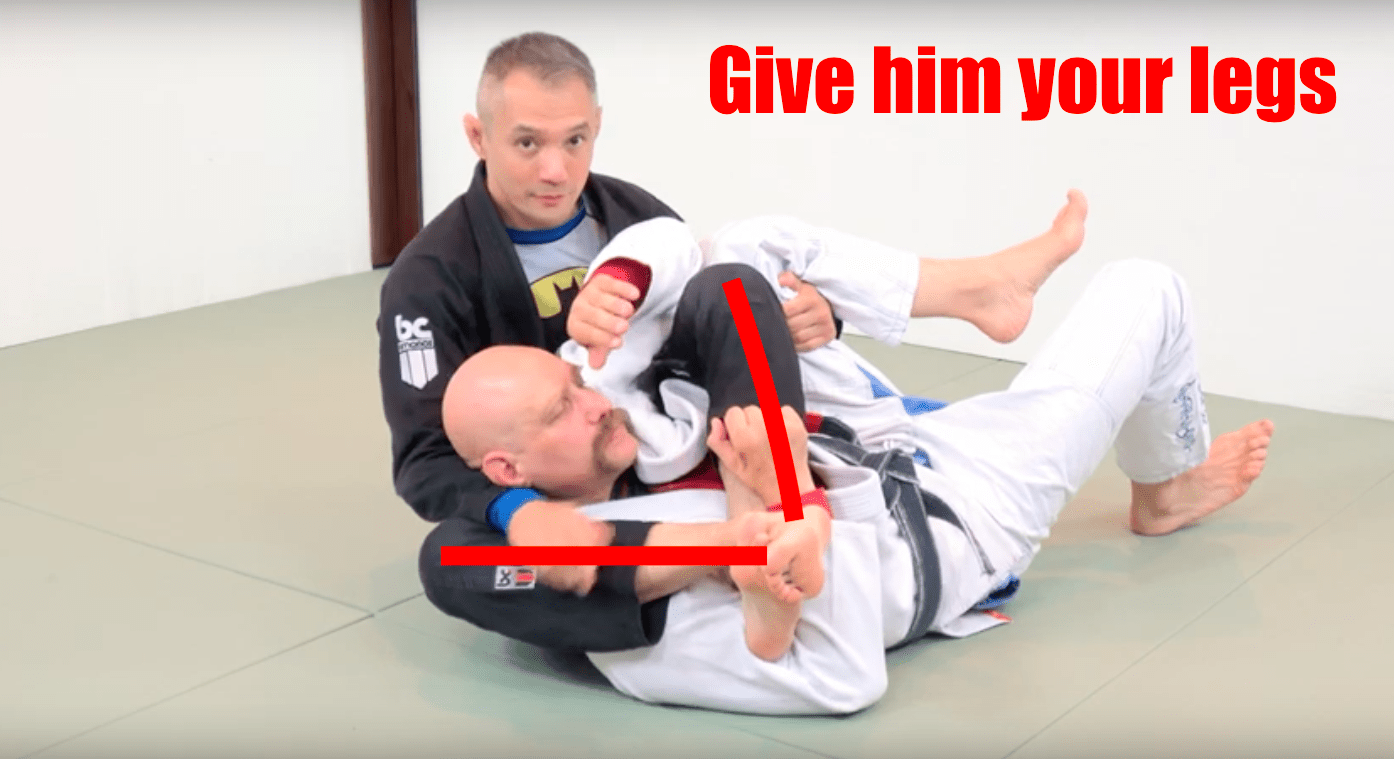
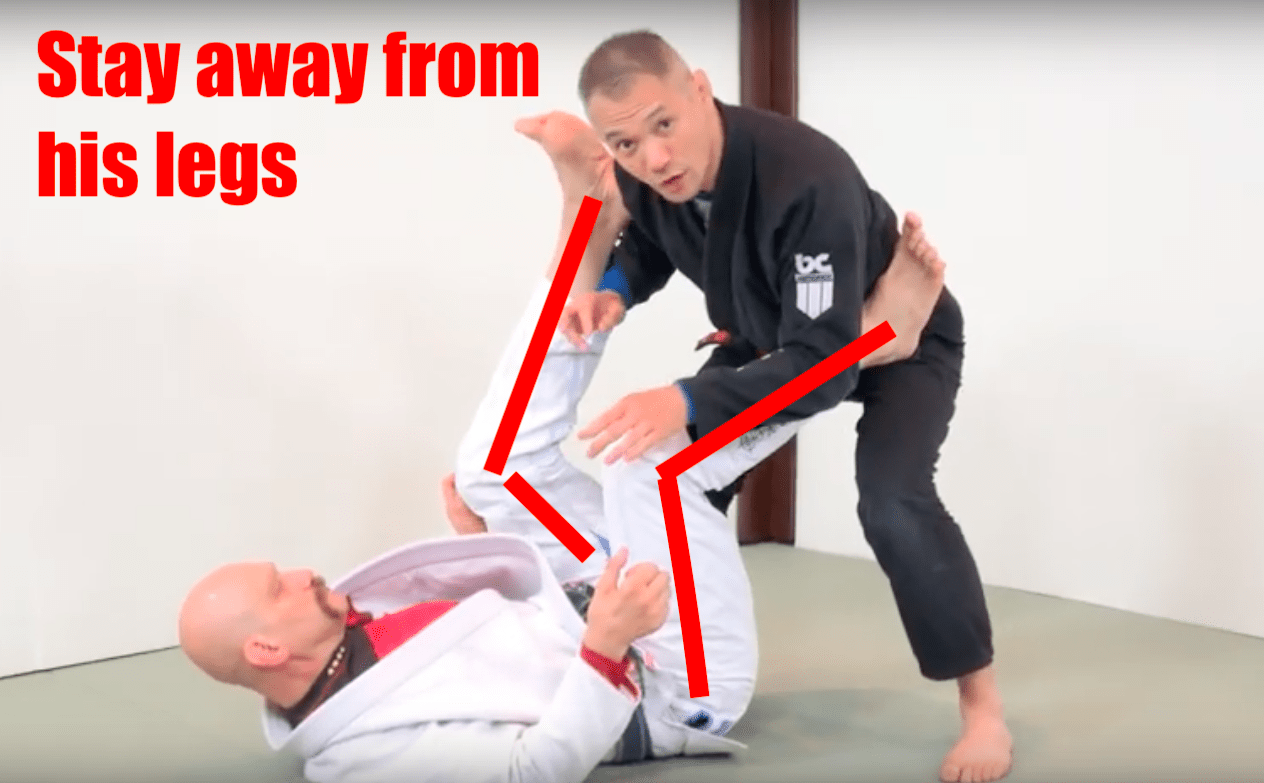 Meaning, you always want to give your partner your legs and you always want to stay away from your partner’s legs.
Meaning, you always want to give your partner your legs and you always want to stay away from your partner’s legs.
Guard Passing and Guard Rentention is an embodiment of this principle.
In addition, most submissions are applied or assisted with your legs.
For example, you pass Guard by getting away from your partner’s legs. And then apply a Mounted Armbar by giving your partner your legs.
You can use this simple principle of always fighting with your feet to help you understand Jiu Jitsu immediately.
Watch 👀 the video 📺😃
Bonus: How To Tie Your BJJ Belt
Okay this is the last thing I’m going to give you. There’s many ways to tie your BJJ belt but this is my absolute favourite way!
Watch 👀 this video 📺 on how to tie your BJJ Belt! 😃
Well, there you have it. The Ultimate Beginners Guide to Brazilian Jiu Jitsu. Understand that this brief article is only a quick guide. For more techniques, check out our 90 Essential BJJ Beginner Techniques. Understand, the true lessons will come from the time you spend at your Jiu Jitsu academy. This is an amazing art and you’ll become a stronger, smarter, healthier version of yourself by embracing it. You’ll make amazing friends and you’ll create amazing memories.
I hope you found this guide helpful!



